On the prominent corner of King William Street and Hindley Street, the Colonial Mutual Life (CML) Building is one of Adelaide’s most iconic structures. Built in 1934, the Romanesque design was similar to a number of other buildings constructed by the Colonial Mutual Life Assurance Society around Australia, New Zealand and even South Africa.
Construction of the Building
The Colonial Mutual Life Building was constructed in 1934, towering eleven stories above the ground. This was the highest legally permissible size at that time, and it remained Adelaide’s tallest building for over three decades. As a result, even though today it is dwarfed by more modern neighbours, the building is still upheld as one of Adelaide’s most iconic landmarks. Built of concrete, it is remarkable for the material of its façade. In the late 1920s, a Queensland mine invented a product called Benedict Stone. This material was created from crushed porphyry and blended into a mixture that was able to be poured and set in moulds, similar to concrete. After the Colonial Mutual Life Assurance Society trialled the use of this new material for the façade of their Brisbane building, they were sufficiently impressed to use it in buildings being constructed in Adelaide, Wellington and Port Elizabeth, South Africa. While Queensland industry was optimistic about the future of their Benedict Stone, it never became popular, and is now remembered mainly for its use in these particular buildings. The uncommon and unusual nature of the building’s façade can be seen in the fact that a recent article in The Advertiser could apparently claim that the stone was named for the Benedictine monks who created it, in spite of this having no basis in fact. The building itself utilised over 50 tonnes of Benedict Stone, including more than a tonne for each of the sculpted lions.
The erection of the building was swift, being completed in December 1934, only nine months after construction began. At this time, Adelaide was still suffering the effects of the Great Depression, so labour was readily available. The opening ceremony was led by Governor Sir Winston Dugan, who hailed the ceremony as ‘probably the most distinguished and representative gathering of business and professional men which has ever been associated with the opening of any new building in this state’. The symbolic importance of the rapid and successful construction was highlighted by Premier Richard Butler, who claimed that it represented a ‘monument to future confidence in our country’. Mr CB Hearn, the Manager of the Colonial Mutual Life Assurance Society, similarly claimed that the swift construction was representative of ‘the thrift and courage of the people’ in allowing ‘the magnificent recovery’ of the State.
In 1936, the building was expanded to the west, significantly increasing the frontage to Hindley Street.
Operation of the Building
The building housed offices for many decades. In 1936, the radio station 5DN, the State’s first commercial broadcaster, moved into a space on the top floors and roof. For their purposes, two 30-metre masts were erected on the roof of the building, with a broadcast antenna system strung up between them. These towers remained through 1956, when the radio station moved to different premises in North Adelaide.
Throughout the 1970s, the building underwent various renovations, including a change to the structure of the windows completed in 1980. In 1984, the façade was inscribed on the State Heritage Register.
By the early 2000s, however, the owners of the building stopped renewing leases for current tenants, with the intention of overhauling the entire space into a new luxury hotel.
Renovation and Opening of the Mayfair Hotel
Plans for renovation into a hotel did not immediately eventuate, and the Colonial Mutual Life Building stood abandoned and derelict for half a decade. Graffiti covered its windows, and it was described as ‘a melancholy sight in the middle of Adelaide’. In 2009, planning for its eventual renovation, the building’s interior was stripped and gutted. By 2011, plans for reconstruction of the interior were finally announced, confirming that a hotel would indeed open. The building was purchased by the Adelaide-based Adabco hotel company, with backing from Malaysian government investors, for $55 million. A significant element in the decision for this funding to convert the building to a hotel was the rising rates of Chinese visitors to Adelaide. With the Colonial Mutual Life Building in a prominent location, and possessing an iconic place in the Adelaide skyline, it was considered a great candidate for rebirth as a luxury hotel catering to this burgeoning tourist demographic.
In 2015, the Mayfair Hotel opened its doors to the public. While it retained the heritage-listed façade of the original CML Building, the entire interior of the building was rebuilt, from the basement through to the rooftop.


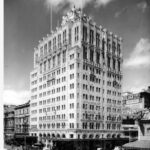

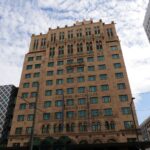
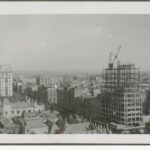
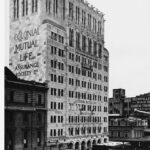
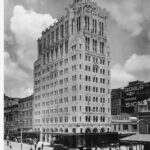

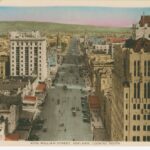
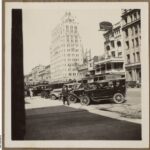
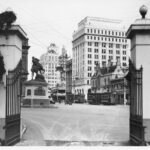
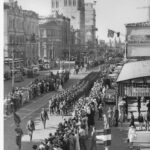
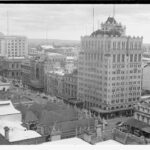
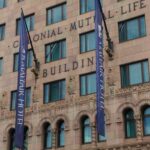
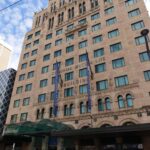

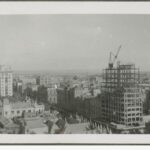
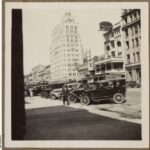
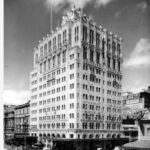
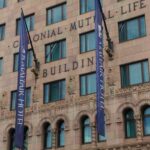
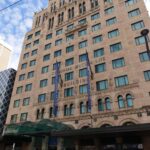
Comments